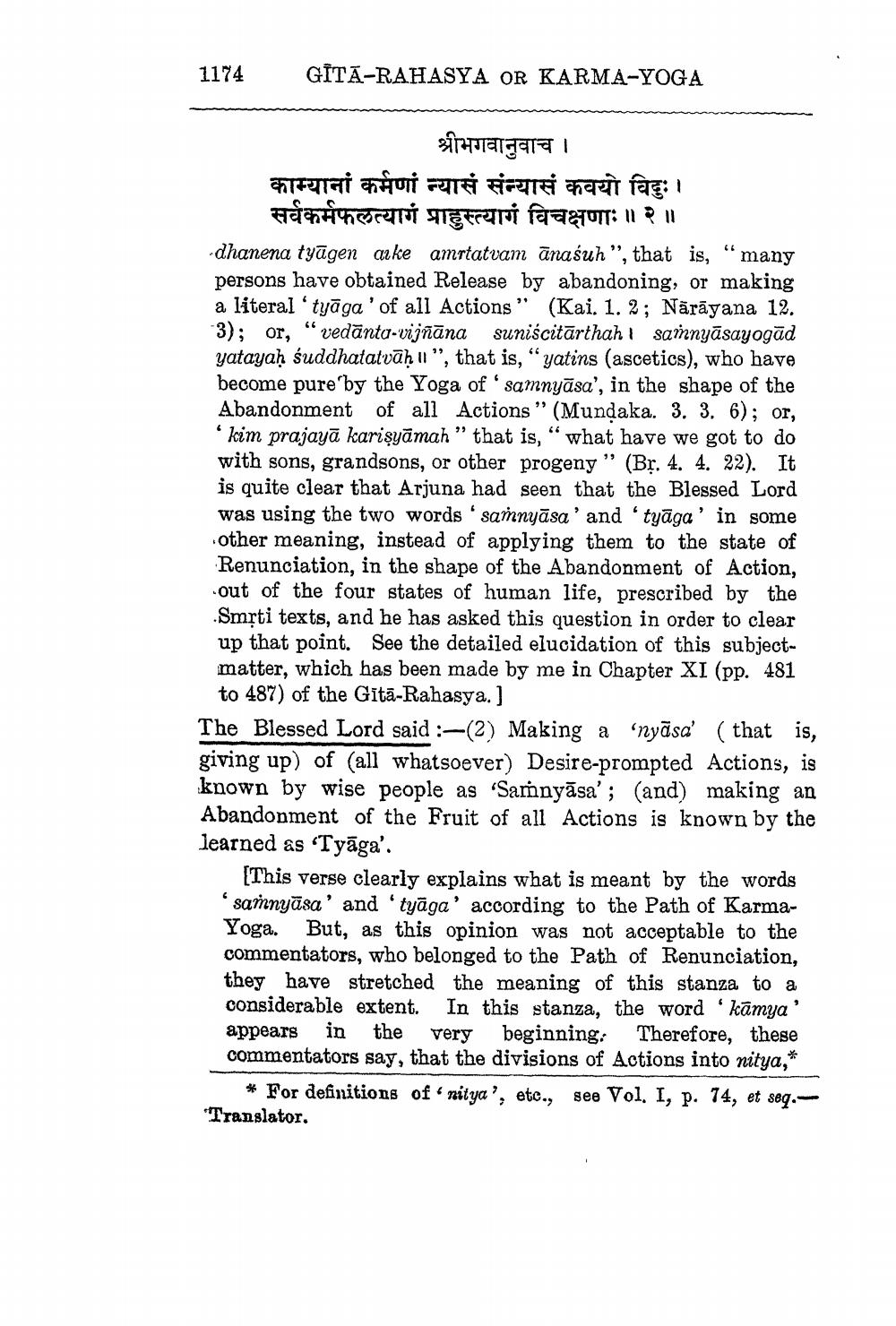________________
1174
GĪTĀ-RAHASYA OR KARMA-YOGA
श्रीभगवानुवाच । काम्यानां कर्मणां न्यासं संन्यासं कवयो विदुः ।
सवेकर्मफलत्यागं प्राहुस्त्यागं विचक्षणाः ॥२॥ dhanena tyāgen arke amrtatvam ānaśuh”, that is, “many persons have obtained Release by abandoning, or making a literal 'tyāga' of all Actions" (Kai. 1. 2; Nārāyana 12. 3); or, "vedānta-vijñāna suniścitārthah! samnyāsayogād yatayaḥ śuddhatatvāḥ ll”, that is, “yatins (ascetics), who have become pure by the Yoga of " samnyāsa', in the shape of the Abandonment of all Actions” (Mundaka. 3. 3. 6); or, 'kim prajayā karişyāmah " that is, “what have we got to do with sons, grandsons, or other progeny” (Bị. 4. 4. 22). It is quite clear that Arjuna had seen that the Blessed Lord was using the two words 'saħnyāsa' and 'tyāga' in some other meaning, instead of applying them to the state of Renunciation, in the shape of the Abandonment of Action, out of the four states of human life, prescribed by the Smrti texts, and he has asked this question in order to clear up that point. See the detailed elucidation of this subjectmatter, which has been made by me in Chapter XI (pp. 481
to 487) of the Gītā-Rahasya. ) The Blessed Lord said :-(2) Making a nyāsa' (that is, giving up) of (all whatsoever) Desire-prompted Actions, is known by wise people as “Samnyāsa”; (and) making an Abandonment of the Fruit of all Actions is known by the learned as 'Tyāga'.
[This verse clearly explains what is meant by the words 'sannyāsa' and 'tyāga' according to the Path of KarmaYoga. But, as this opinion was not acceptable to the commentators, who belonged to the Path of Renunciation, they have stretched the meaning of this stanza, to a considerable extent. In this stanza, the word 'kāmya' appears in the very beginning: Therefore, these commentators say, that the divisions of Actions into nitya,*
* For definitions of nitya', etc., see Vol. I, p. 74, et seq.Translator.




